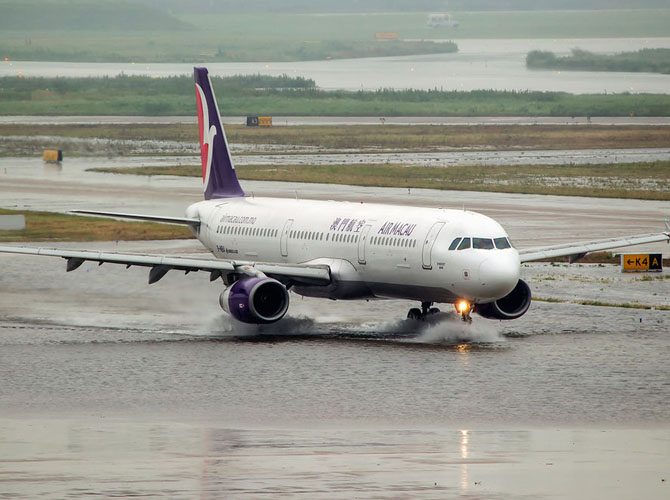
Shanghai is the only Chinese city that has two international airports - Pudong International Airport and Hongqiao International Airport. The two modern airports are equipped with very advanced facilities. Everyday, about 1,000 flights travel through the two airports, linked with many domestic and international cities such as Beijing, Hong Kong, New York, Los Angeles, London, Paris, Tokyo and Singapore.

The railway network provides you with an inexpensive and comfortable way to get to the city. Huning (Shanghai - Nanjing) Railway and Huhang (Shanghai - Hangzhou) Railway pass through Shanghai and connect its three main railway stations with cities all over the country. Here you can also take advantage of tourist trains and special 'Holiday Trains' to scenic areas in other provinces such as Mt. Huangshan in Anhui and Mt. Wuyishan in Fujian.
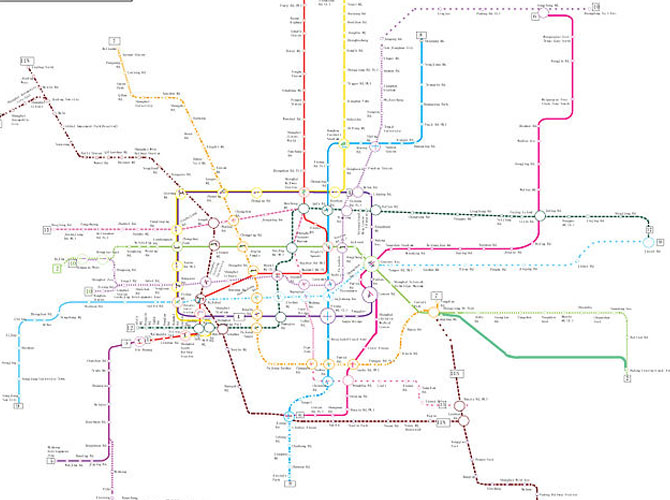
Twelve subway lines have connected all over the city, with stops at or nearby the main attractions and commercial areas. If you are just sightseeing and in no hurry, the subway will provide you with fast and comfortable service (though you may want to avoid rush hour of 07:00 to 09:30 and 16:30 to 19:30). Subway Lines: Line 1, Line 2, Line 3, Line 4, Line 5, Line 6,Line7, Line 8, Line 9, Line 10, Line 11, Line 13 How to Take Subway Subway Transfer Subway Ticket Bilingual List of Subway Stations Shanghai Subway Map

Taking taxis in Shanghai is more expensive than in other cities. In the daytime, the price is CNY13 for the first three kilometers (1.9 miles), an additional charge of CNY2.4 for every succeeding kilometer within 10 kilometers (6.2 miles) and CNY3.6 for every succeeding kilometer after 10 kilometers. *CNY1 fuel surcharge should be paid per journey. At night from 23:00 to 05:00 the next morning, the fare is CNY17 for the first three kilometers, an additional charge of CNY3.1 for every succeeding kilometer within 10 kilometers and CNY4.1 for every succeeding kilometer after 10 kilometers. You can bargain over prices when taking taxis at night. *CNY1 fuel surcharge should be paid per journey. Whether you take a taxi during daytime or at night, CNY2.1 (CNY3.1 at night) will be added for every five minutes of stop time.
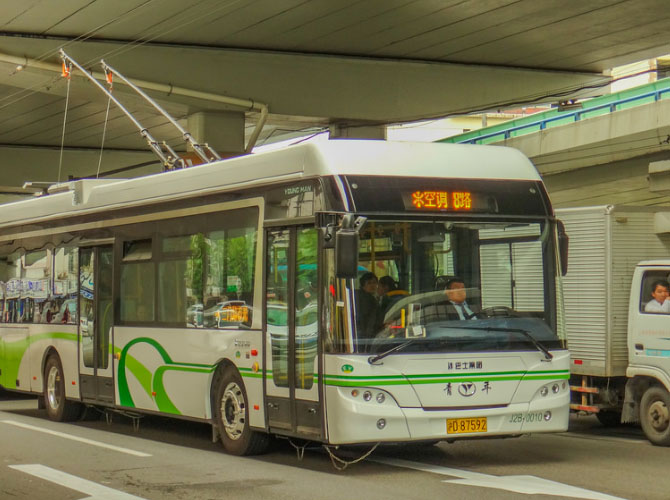
Shanghai public buses are identified either by numbers or Chinese characters. Buses can generally be classified into the following nine categories: 1. Downtown Regular Lines: 1 (01) - 200 2. Rush Hour Lines: 201 - 299 (although some include regular lines) 3. Night Lines: 301 - 399 4. Cross-River Lines (the new cross-river lines): 401 - 499 5. Bridge Line X, Tunnel Line X (the old cross-river lines): X = specific route number 6. Special Lines: 504 - 599, 801 - 899, 901 - 999 7. Pudong New District Special Lines: 601 - 699 8. Outskirts Regular Lines: 701 - 799 9. Suburban Lines: usually identified by Chinese characters representing an abbreviated form of the first and terminal stations' names.
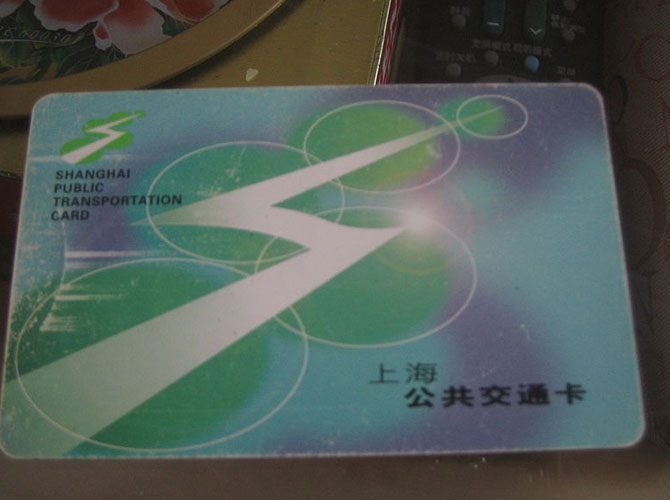
It will be more convenient and pleasant if you use a Shanghai Public Transportation Card when you are in Shanghai. Like the MetroCard in New York City and the Oyster Card in London, it is a kind of stored value smart card used in the public transportation of Shanghai and some cities in the nearby Jiangsu, Zhejiang and Anhui Provinces.
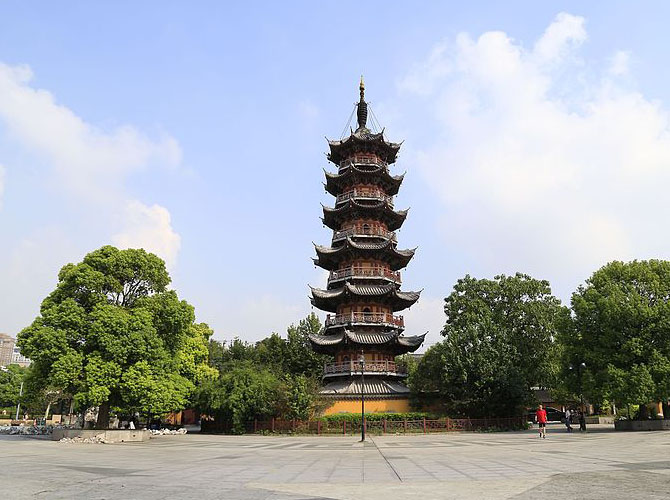
Shanghai weather is generally mild and moist, with four distinct seasons - a pleasant warm spring, a hot rainy summer, a comfortable cool autumn and an overcast cold winter. The region's location at the estuary of the Yangtze River to the East China Sea makes it so wet that it rains for about one third of the year. The hottest time here comes in July and August, with more than 10 days at temperatures above 35 °C (95 °F). The coldest time is from the late January to early February. The spring from March to May is recommended as the best time to pay a visit.
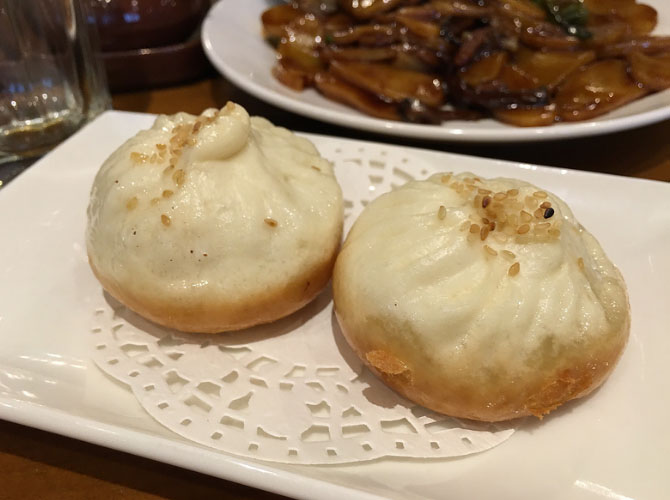
Shanghai Cuisine is not one of the Eight Major Cuisines of China but is a choice blend of the most appealing aspects of these other national styles of food. Shanghai Cuisine, also known as Hu Cai, includes two styles - Benbang Cuisine and Haipai Cuisine. Benbang Cuisine and Haipai Cuisine have many things in common. Most of the dishes taste fresh, clear, mellow, sweet or subtly spicy.
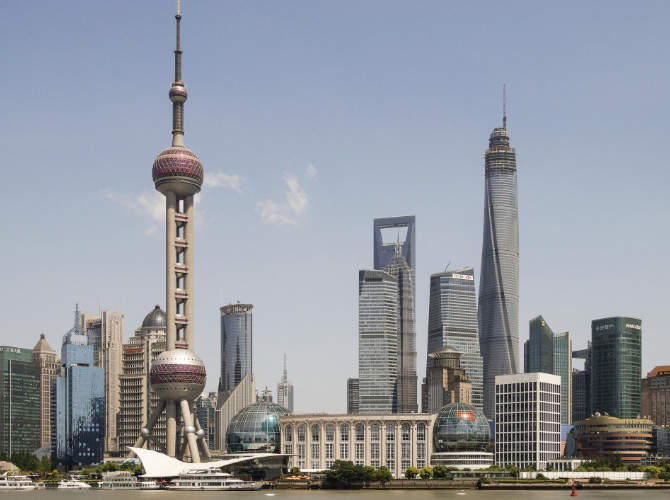
Shanghai, a vigorous and energetic international metropolis, welcomes people from all over the world to enjoy its special atmosphere. This modern metropolis with its rich heritage of ancient Chinese culture has much to see and do. Huangpu River is not only the mother river of Shanghai, which divides the city into east and west parts, but also assembles the splendid attractions of the city. Situated on the east bank of the Huangpu River, the Bund is the symbol of Shanghai. New finance and commercial houses as well as grand buildings built in 1930s in the European architectural styles cluster along the Bund. At night bright lights add to the happy atmosphere as people stroll along the wide riverside promenade.

All the local hospitals in Shanghai are open to international students. Students with minor illness can go to schools' clinic for help. If you are badly ill, you can see a doctor in any of the local hospitals. Tips for seeing a doctor in the local hospitals Process: Bring your passport, then fill in a form in the hospital which contains your name (English name or Chinese name), date of birth and contact person in China (name and contact) Register with a doctor Waiting at the corresponding section Seeing the doctor